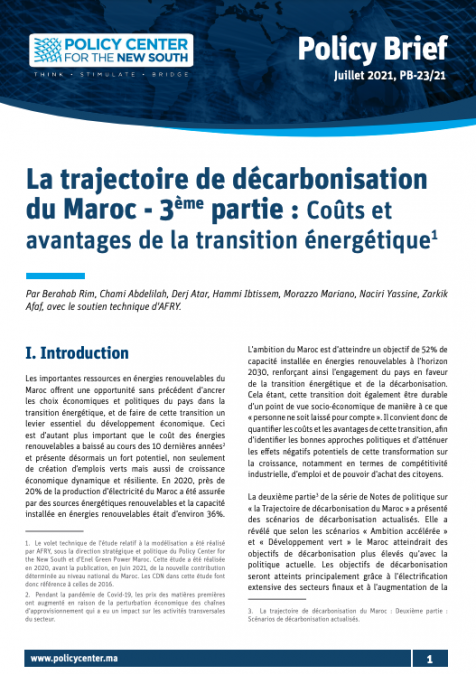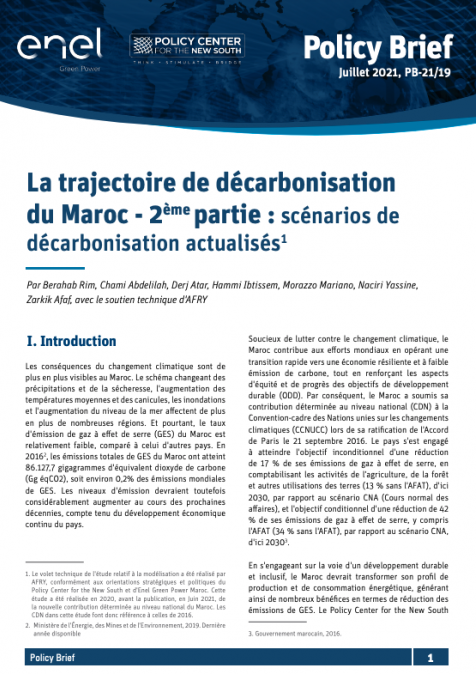Publications /
Policy Brief
Policy Brief
Morocco’s Decarbonization Pathway Part II: Updated Decarbonization Scenarios
July 9, 2021
The consequences of climate change are becoming progressively more visible in Morocco. Changes in rainfall patterns and drought, increases in average temperatures and heatwaves, flooding, and rising sea levels are increasingly affecting several regions. Yet, Morocco has a relatively low greenhouse gas (GHG) emission rate, compared to other countries. In 20162, Morocco’s total GHG emissions reached 86127.7 gigagram of carbon dioxide equivalent (Gg CO2-eq), totaling around 0.2% of global GHG emissions. However, emission levels are anticipated to increase significantly in the coming decades as a result of the country’s continuing economic development.










